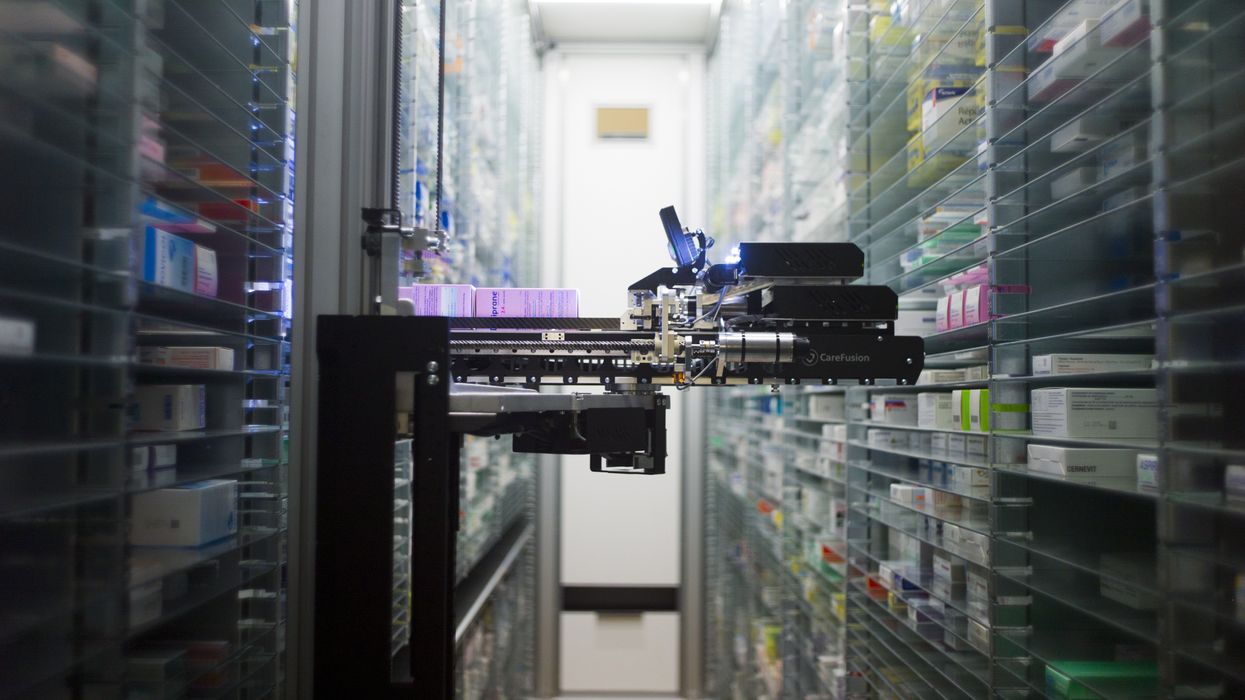Zhyar Said explores how embracing technology can help pharmacies stay competitive, improve patient care, and shift from dispensing to delivering value.
Pharmacy automation is often associated with large-scale robotic systems used in hospital dispensaries or centralised hubs to efficiently sort and dispense medications.
However, the scope of automation has expanded significantly in recent years; now encompassing a wide range of technologies, from aforementioned robots to simpler yet highly effective solutions such as automated text messaging systems that notify patients when their prescriptions are ready for collection.
The broader implication of this technological shift is that automation serves not merely as a convenience, but as a strategic enabler for cost reduction and operational scalability. In the context of pharmacy, it allows healthcare professionals to allocate more time to patient-facing activities as well as enhancing patient safety by reducing dispensing errors.
When I think of automation, my mind typically conjures images of vast, remote warehouses filled with industrial robots—particularly in the context of car manufacturing.
However, my first real encounter with automation in everyday life occurred in an unexpected place: a high street kebab shop where a machine was efficiently slicing doner meat from a rotating grill.
Curious, I asked the owner about it. When he revealed the machine cost £20,000, my surprise was evident. He quickly explained the rationale behind the investment. One full-time staff member spent a significant portion of their time manually cutting meat, amounting to an annual cost of approximately £12,000. The machine would pay for itself in under two years and continue generating long-term savings. More importantly, it reduced his dependency on staffing ensuring consistency in his operations.
The comparison between a kebab shop and a pharmacy may seem unconventional, yet the underlying operational challenges are strikingly similar.
Many community pharmacies employ dispensers, often earning salaries around £26,000 per year, whose primary responsibility is to manually prepare monitored dosage system (MDS) trays. This repetitive, high-pressure task contributes to staff burnout and high turnover.
Increasingly, pharmacies are turning to MDS automation, investing in machines that can streamline this process and reallocate staff to more value-driven roles; especially vital at a time when both dispensers and accuracy checking technicians (ACTs) are in short supply.
While some pharmacy owners may argue that such machines only make financial sense at scale, with smaller units starting at approximately £50,000 and larger models nearing £100,000, the return on investment is often achieved in under two years through savings in staff costs alone.
More importantly, automation enables scalability. It raises a strategic question: is automation not necessary as you don’t have enough MDS patients, or is the absence of automation the very reason you’re unable to scale your MDS offering?

Ultimately, those companies that have made significant investments in automation and technology, such as Pharmacy2U, Lloyds Direct, and PillTime, are now leading the way in high-volume dispensing.
Pharmacy2U, for instance, dispensed approximately 2.62 million prescription items in December 2024 alone, marking a 66 per cent increase from 1.51 million items in December 2023. This dramatic growth and shift toward the hub-and-spoke dispensing model fortifies that this evolution is long overdue and presents a transformative opportunity for community pharmacies: by offloading the time-intensive task of dispensing, pharmacies can reposition themselves as clinical service hubs.
With greater capacity to deliver services, there is potential to significantly enhance revenue, particularly from private offerings.
In a world where convenience is king and consumers expect services to be accessible via their smartphones and delivered to their doorsteps, competing with large-scale prescription delivery providers is increasingly difficult. Rather than resisting this change, community pharmacies time would be better served adapting to survive, by automating dispensing and shifting towards services.
Turning to clinical services, a key question is how pharmacies can increase footfall for offerings such as blood pressure checks or vaccinations.
Modern PMR systems and PMR extensions now allow pharmacies to filter patient records to identify specific target groups.
For example, to promote the NHS blood pressure service, you can filter for patients over 40 without a recorded hypertension diagnosis, and then send a bulk message inviting them in for a free check. This approach is far more effective than relying on opportunistic conversations with walk-ins, where staff must ask patients if they have 20 spare minutes for a check.

Technology now enables pharmacies to proactively and precisely match services to eligible patients, removing guesswork and significantly boosting uptake simply by making patients aware that the service is available.
Automation has also made significant strides in the realm of stock management, with tech-enabled wholesaler platforms now allowing pharmacy contractors to secure the most competitive pricing with minimal effort.
The days of negotiating deals over the phone with suppliers like the DE Group, who closed their doors in 2022, are becoming a thing of the past. Instead, with a few clicks, pharmacies can now utilise platforms that automatically source medicines from the lowest-priced wholesalers, cascading down the list until reaching the Drug Tariff price.
These systems are designed to consider factors such as pack size and brand, ensuring both compliance and cost-efficiency. In an environment where margins are tight and purchasing decisions directly impact profitability, this type of intelligent procurement is proving indispensable.
To summarise, automation in pharmacy is inevitable – it is essential for any pharmacy with ambitions to grow. It enables staff to redirect their time toward expanding rather than being tied up with repetitive tasks. Ultimately, automating is investing in the future of the business. As with any growth strategy, you have to spend money to make money!
Zhyar Said, director of RevisePharma and senior lecturer - Pharmacy Practice, Kingston University.












